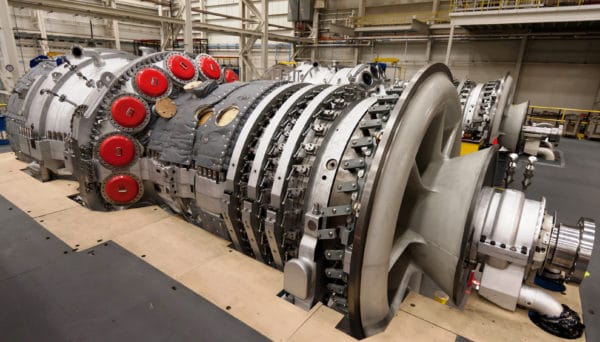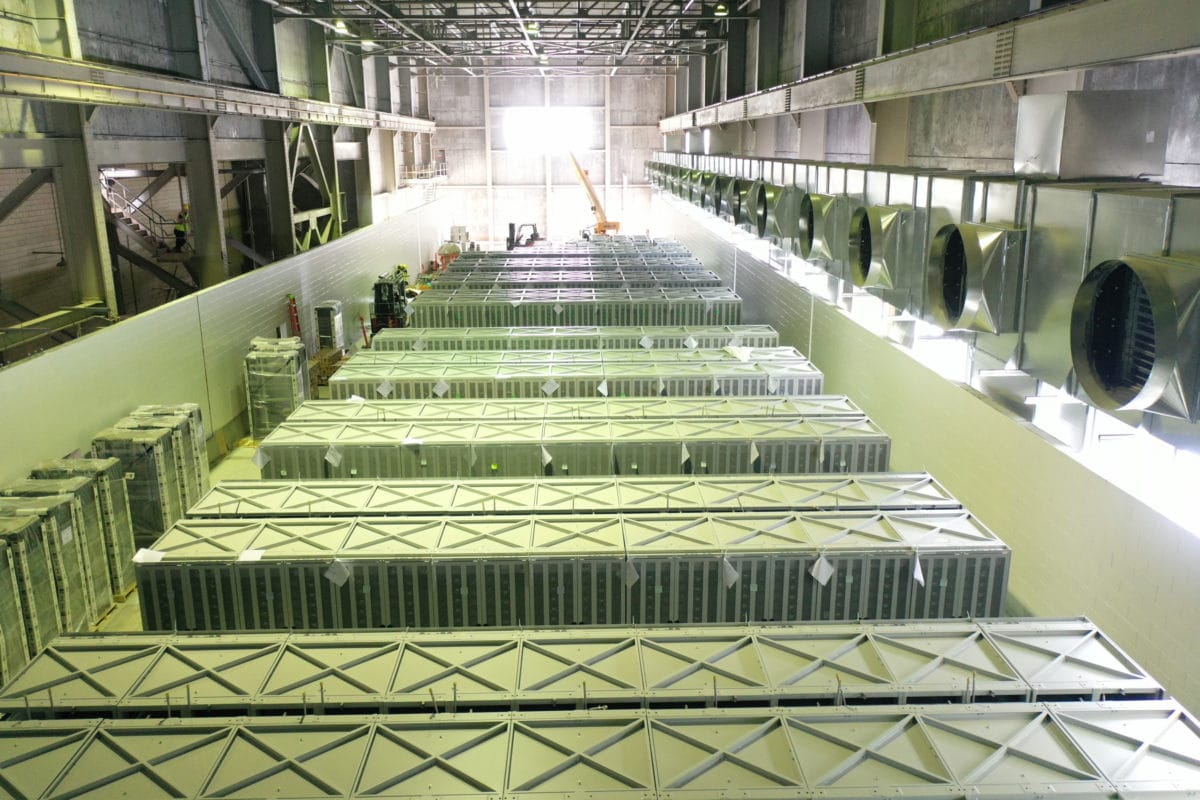South Korea-based LG Energy Solution said it supplied Vistra’s Moss Landing Energy Storage Facility in California with its Transportable Rack (TR1300). The 300 MW/1.2 GWh facility connected to the power grid in December, and LG Energy announced details of its involvement in mid-June.
The Moss Landing project uses more than 4,500 TR1300 battery racks. The TR1300s were pre-assembled at the factory prior to shipment to reduce construction time and associated installation costs. Factory assembly also ensured consistent quality of the assembled rack systems, the company said.
LG Energy said the TR1300 was double-stacked to boost energy density and enabled the full 1.2 GWh of battery capacity to fit inside the existing turbine house.
In late May, LG Energy Solution said it would replace, at its own cost, lithium-ion battery cells used for certain energy storage products that were manufactured between April 2017 and September 2018. The replacement program came after overheating incidents were reported.
The company said in a statement that it determined that there were issues in the early production processes for electrodes used in potentially affected batteries. Reports said the batteries were produced at the company’s Nanjing factory in China. The replacement program could cost around $350 million.
New batteries will incorporate manufacturing process improvements. The company said it also would implement remote modifications to reduce the potential for overheating while owners wait for their replacement units. LG Energy Solution also will update its battery diagnostic and control software. And it said that field inspections would be undertaken to monitor and minimize the potential for further incidents.
In an April 2019 accident involving one of the company’s utility-scale lithium-ion battery arrays at an Arizona Public Service location, a thermal runaway event in a lithium-ion cell triggered a chain of events that led to an accumulation of gases in the container that housed the batteries. Those gases exploded when first responders opened an access door to investigate reports of smoke coming from the container. Two firefighters were seriously injured in the explosion.
In a report released last July, the utility and its third-party investigator said that evidence pointed to the failure of a single lithium-ion cell as triggering the events. LG challenged that finding, saying that the utility’s report missed a number of details about the accident. Those details indicated, LG said, that the cell thermal runaway began due to “intense heating” caused by a heat source “such as external electrical arcing” on one of the battery racks.
Long-duration energy storage in Alberta
Quidnet Energy and Emissions Reduction Alberta with funding from the Government of Alberta, launched a project to develop a low-cost, multi-gigawatt geologic energy storage resource in Alberta, using Quidnet’s modular pumped hydro storage technology.
The project received C$5 million ($4.04 million) in funding from ERA and will take place at Quidnet’s geologic test site in Brooks, Alberta.
The technology stores energy in the form of water compressed between layers of shale and enables renewable energy projects to store excess energy, to be released when the grid needs power.
Quidnet is developing energy storage projects in Texas, Ohio, and New York. It claimed per-kilowatt installed costs at less than 50% of batteries and traditional pumped storage, and said its systems can be configured for applications with 10 hours or more of storage duration.
Quidnet is working with the Energy Department’s Advanced Research Projects Agency–Energy (ARPA-E) through its Duration Addition to electricitY Storage (DAYS) program to develop the company’s technology in power markets across the U.S. by planning and executing exploratory wells to characterize, evaluate, and validate this geologic resource. In April, the company said it had completed project development of the exploration well sites and achieved resource performance targets during exploration well hydraulic testing.
Siemens to supply hydrogen-capable turbines
Siemens Energy said it will provide two SGT6-5000F turbines to power Omaha Public Power District’s (OPPD) new Turtle Creek Station Peaking Plant in Nebraska.

Image: Siemens Energy
The simple cycle turbine will be used to modernize backup generation in the public utility’s fleet. The turbines offer the ability to run on up to 30% hydrogen and biodiesel in support of future technology advancements.
Siemens Energy aims to have all its new gas turbines capable of burning 100% hydrogen by the end of 2030.
The Turtle Creek Station is part of an OPPD project to develop up to 600 MW of solar generation and up to 600 MW of modernized replacement and backup natural gas generation resources.
This content is protected by copyright and may not be reused. If you want to cooperate with us and would like to reuse some of our content, please contact: editors@pv-magazine.com.









By submitting this form you agree to pv magazine using your data for the purposes of publishing your comment.
Your personal data will only be disclosed or otherwise transmitted to third parties for the purposes of spam filtering or if this is necessary for technical maintenance of the website. Any other transfer to third parties will not take place unless this is justified on the basis of applicable data protection regulations or if pv magazine is legally obliged to do so.
You may revoke this consent at any time with effect for the future, in which case your personal data will be deleted immediately. Otherwise, your data will be deleted if pv magazine has processed your request or the purpose of data storage is fulfilled.
Further information on data privacy can be found in our Data Protection Policy.